-
关于
-
商业
-
青年
-
资料
Home / 慧眼中国环球论坛
“慧眼中国环球论坛”于2010年由新加坡通商中国创立,由创会赞助人建国总理李光耀先生担任首届主宾。这个论坛是一个汇聚政治、工商、学术、研究等各领域领袖和专家的国际性交流平台。过去的各届论坛受到国际媒体广泛报道,并吸引了来自世界各地的嘉宾。
欲知2025年论坛的主讲人及合作伙伴详情,请浏览 fcgf2025.businesschina.org.sg
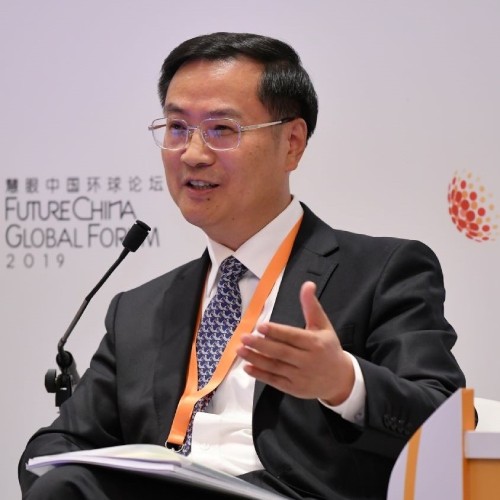
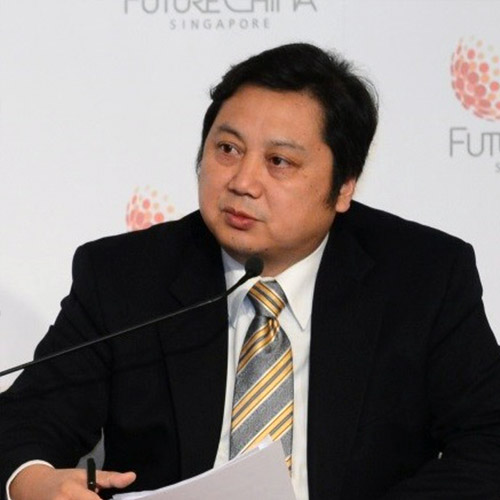
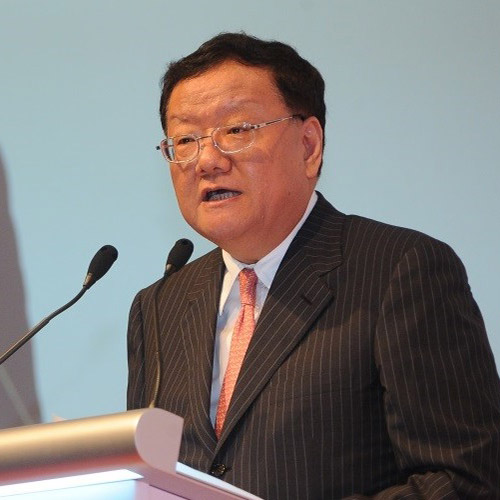
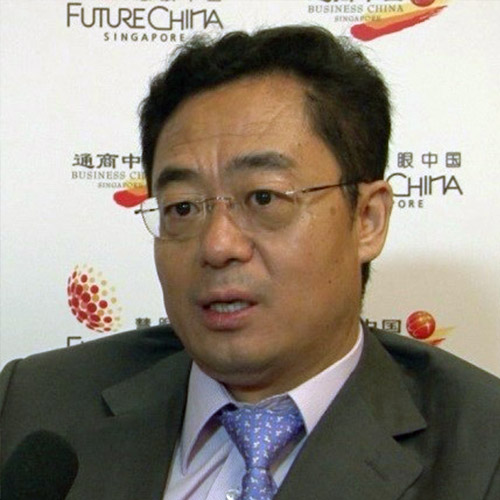
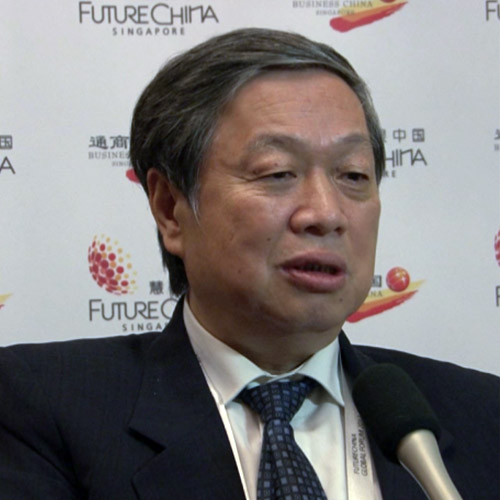
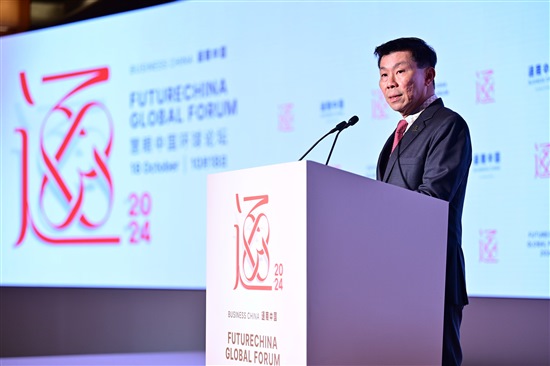
在多极化的世界增强合作
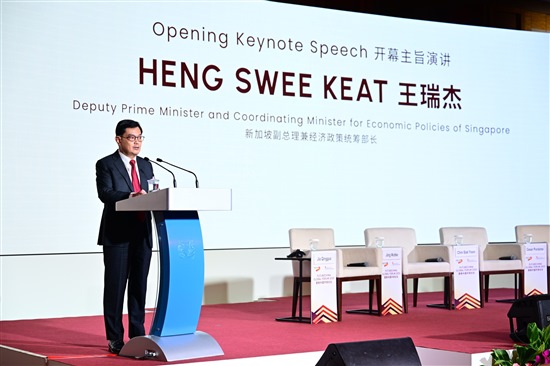
透视变局,领航未来
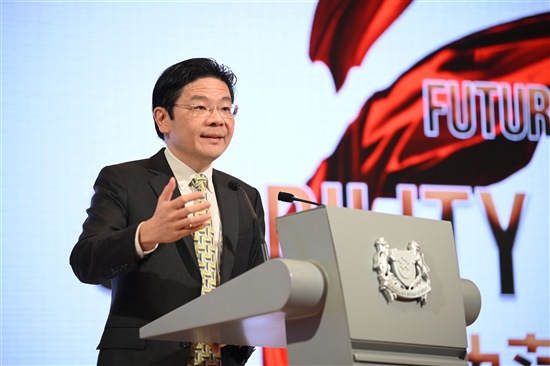
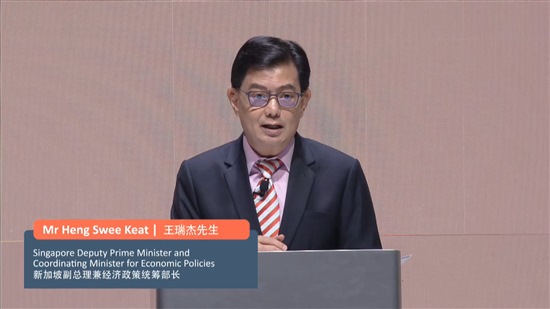
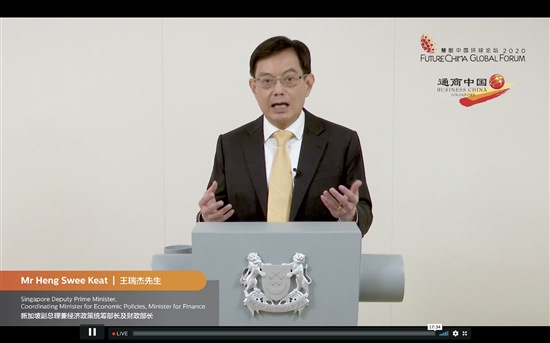
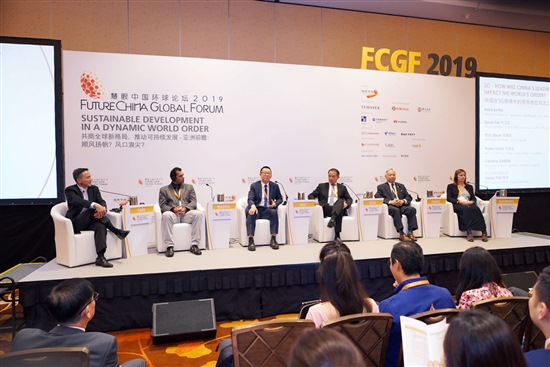
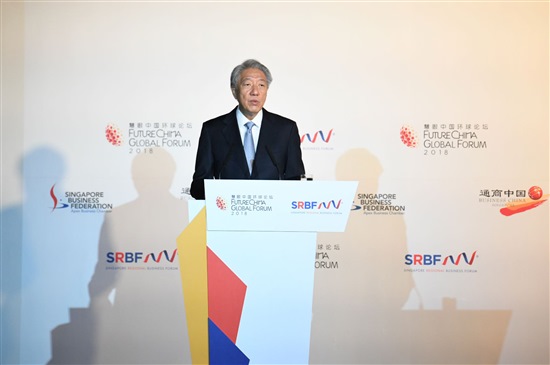
Day 1 – Monday, 27 August 2018
| 0800hrs | REGISTRATION OPENING SESSION WELCOME ADDRESS S.S. Teo, Chairman, Singapore Business Federation |
| 0900hrs – 0955hrs | Lee Yi Shyan, Chairman, Business China Opening Speech by Guest-of-Honour Teo Chee Hean, Deputy Prime Minister and Coordinating Minister for National Security, Singapore Launch of SBF Infrastructure Committee Memorandum of Understanding Signing Ceremony & Launch of BRI Training |
| 0955hrs – 1005hrs | TEA AND NETWORKING BREAK |
| 1005hrs – 1015hrs | Speech Ding Xiangqun Vice Governor of Guangxi Zhuang Autonomous Region, People’s Republic of China |
| 1015hrs – 1025hrs | Speech Zhang Shizhen Vice Governor of Guangxi Zhuang Autonomous Region, People’s Republic of China |
| 1025hrs – 1115hrs | 1 – OPENING PLENARY SESSION Economic integration brings both opportunities and challenges. ASEAN’s future will be shaped by the way the member states respond to challenges:
|
| 1115hrs – 1210hrs | 2A – PANEL DISCUSSION BRI & CONNECTIVITY TRACK 1: WHAT NEXT FOR THE BELT & ROAD TRILLION DOLLARS INFRASTRUCTURE PLAN? After the slow pace of implementation of projects in 2017, Beijing has been keen to accelerate the pace for developing BRI projects, putting more pressure on SOEs to deliver. At the same time, as the extent of the scope and ambitions of the BRI becomes clearer, the question of the need to involve more sources of financing is assuming a greater relevance and urgency. What could that mean for foreign investors? Five years after the launch of the BRI, where do we stand in terms of projects undertaken?
— 2B – PANEL DISCUSSION Business formation is down, but start-ups are in high gear. Start-ups are flourishing in China, Singapore and other ASEAN countries, contributing to a reshaping of the economic and business fabric in the respective countries, and helping to create new sources of growth. Although many of these startups may fail, the start-ups create dynamism in economic development. What possible linkages or collaboration among these start-ups would increase efficiency and the chances of success?
— 2C – PANEL DISCUSSION The world’s economic map is today dominated by many clusters. Each cluster varies in intensity and effectiveness levels where economic interaction is concerned. These clusters span across the European Union and the Eurozone area to the North American industrial platform that NAFTA has created, to ASEAN and the ASEAN-China increasing interaction, to the North-East Asia de facto cluster created by the increasing economic and business links between China, Japan and Korea (despite the bursts of political tensions between these countries). How does ASEAN figure in this world of clusters in terms of regional economic integration which promote business, trade and financial interaction among its member states? PANELLISTS
|
| 1210hrs – 1330hr | 3 – PLENARY LUNCHEON IN CONVERSATION WITH MINISTER ONG YE KUNG: INNOVATION AND ENTERPRISE IN THE AGE OF DISRUPTION Against a backdrop of disruptive technologies, the harnessing of innovation is key to enterprise advancement. For businesses, how can they embrace and adopt disruptive technologies, translate it into innovation and leverage innovation for new business opportunities? How can companies – especially the start-ups – build on their entrepreneurial spirit to generate new ideas and turn them into new business realities, sustained by new business models? Start-ups and entrepreneurs can be the corporate champions of tomorrow by riding on the technology innovation to disrupt the current economic system, improve the economic efficiency and create better economic spinoffs the corporate champions of tomorrow. In an environment which requires and rewards future-oriented entrepreneurial spirit and leadership, business leaders and entrepreneurs need to know how to develop and nurture the strategies and the corporate culture that will help anticipate the next breakthrough and be one step ahead of the curve. Digital technology today is rapidly transforming markets and will lend value to the companies that master it. PANELLISTS
MOU Signing |
| 1340rs – 1500hrs | 4 – PLENARY SESSION BEIJING GROWTH MODEL: THE “CHINA DIFFERENCE” AND HOW IT IMPACTS CHINA’S DEVELOPMENT AND ITS CONNECTIVITY TO THE WORLD ECONOMY AND ASEAN The 19th National Congress of the CCP has confirmed that the Chinese leadership is intent to pursue the country’s economic development according to its own model and that it is focusing on improving the efficiency of its “socialist market economy”. The difference between the Western traditional economic model and the Chinese one is beginning to raise a number of issues and challenges as China now represents about 19% of the total world GDP and is the world’s number one economy in PPP terms. This is also translating into trade tensions between China with the US and Europe on one hand, and between China and the rest of the world on the other hand. How can the two systems manage to co-exist and interact fruitfully to the benefit of the world’s economy? PANELLISTS
|
| 1500hrs – 1530hrs | TEA AND NETWORKING BREAK |
| 1530hrs – 1700hrs | 5A – PANEL DISCUSSION BRI & CONNECTIVITY TRACK 1: GREENING THE NEW SILK ROAD TOWARDS SUSTAINABLE DEVELOPMENT: THE OPPORTUNITIES FOR INVOLVEMENT AND GREEN FINANCE INVESTMENT China is expected to install around a third of the world’s total wind energy, solar and hydroelectric generation capacity by 2021. A proportion of this will go into wind, solar and other renewable energy projects in the BRI countries. This is also an opportunity to scale-up green financing. Beijing committed to supporting green financing during the Hangzhou G20 summit in August 2016, and it is today the largest issuer of green bonds. The Asia Infrastructure Investment Bank is also officially on board for supporting projects which are “lean, clean and green”. What criteria should be used to prioritize clean projects? PANELLISTS
— 5B – PANEL DISCUSSION China is steadily achieving technological superiority in the key areas of IOT, artificial intelligence, robotics, and e-commerce. However, despite the China-ASEAN Science and Technology Partnership Program jointly launched by the Ministers of Science and Technology of China and ASEAN, not much has really happened in terms of technology transfers and collaboration to promote more technological innovation. What are the priority domains of technological innovation on which greater efforts for technology transfer and collaboration should focus? PANELLISTS
— 5C – PANEL DISCUSSION According to the State Information Center of China, the market value of the sharing economy was 4.5 trillion yuan (about 680 billion U.S.$) in 2017, and this sector is expected to maintain an annual growth of about 40% over the next few years. This business model which was developed in the consumption sector is now fast expanding to manufacturing and artificial intelligence (AI) enterprises, generating new growth potential. The sharing of production materials has become more widespread and knowledge sharing is on the rise. However, the rise of the sector is creating the need for guidelines and regulations. The Chinese government aims to encourage innovation in the sharing economy while regulating the sector. Specific employment and taxation policies would also be adopted to assure the sharing economy’s growth. How best to get involved in this fast expanding sector of activity? PANELLISTS
|
| 1700hrs – 1830hrs | 6A – PANEL DISCUSSION BRI & CONNECTIVITY TRACK 1: HOW TO MAKE THE BELT & ROAD INITIATIVE A BOOSTER FOR ASEAN’S CONNECTIVITY? According to a study from UNCTAD, ASEAN countries will need to invest between US$60 and US$146 billion per annum until 2025 in the different infrastructure sectors, to sustain their growth, achieve their objectives in poverty eradication and be able to offset the impact of climate change. Chinese investments related to the B&R Initiative have exceeded US$60bn since 2013 and set to pick up with US$600-800bn investments planned for the next five years. Chinese companies are taking an increasingly larger role in infrastructure projects and the Belt and Road Initiative is bound to increase significantly the role of Chinese investment. PANELLISTS
— 6B – PANEL DISCUSSION China has launched a major effort to become a key center for the development of AI, with huge investments and concerted advances by the government and the private sector to create a US$150billion AI industry by 2030. The country’s huge internet-connected population, the intensive expansion of e-commerce and fintech, the weakness of privacy laws in China give the country a big advantage in that domain which is central to the success of the “Made in China 2025” initiative and to China’s overall international competitiveness. At the same time, the development of blockchain technology and cryptocurrencies has become a hot topic in China. While the People’s Bank of China (PBoC) announced an immediate ban on Initial Coin Offerings – and the shutdown of all domestic cryptocurrency exchanges, the Ministry of Industry and Information Technology launched the Trusted Blockchain Open Lab to promote the exploration of blockchain technology. Many members of ASEAN are engaged in AI and blockchain development with Singapore in a leading position. How can China support AI development and adoption in ASEAN countries? PANELLISTS
— 6C – PANEL DISCUSSION All over Asia, starting with China, the healthcare industry is going through major changes as it leverages the applications of disruptive technologies such as artificial intelligence, IOT, virtual and augmented reality. Such technologies bring digital solutions to healthcare challenges, providing enhanced healthcare services such as through improved diagnostic capabilities, tele-surgery, and online medical care. China’s mobile health market is expected to reach a value of US$3.7billion by end 2018. Healthcare organizations are increasingly unleashing the power of intelligent technologies to deliver personalized, efficient and informed care. Major improvements in the domains of data capturing and sharing are helping doctors review the status of patients much faster and accurately than before. More generally, healthcare service providers are increasingly integrating the applications of intelligent technologies to deliver more efficient and informed care. Given the huge unmet demand in China and all over Asia, digitally enabled care is now considered a “must have” for delivering high quality care. Along with well-established healthcare companies, a huge number of start-ups created by digital health entrepreneurs are now contributing to the acceleration of the development of the digital healthcare industry. What are the domains where advances in digital healthcare can be capitalized most rapidly? PANELLISTS
|
| 1845hrs – 2100hrs | WELCOME DINNER PROSPERITY THROUGH INNOVATION AND REGIONAL CONNECTIVITY Ho Kwon Ping, Executive Chairman, Banyan Tree Holdings Limited, Singapore |
Day 2 – Tuesday, 28 August 2018
| 0900hrs – 1000hrs | 7 – PLENARY SESSION There is no underestimating the growing concerns among ASEAN countries about the U.S. staying power in the region—particularly after the U.S. withdrawal from the Trans-Pacific Partnership, and also in view of the almost exclusive focus that the Trump administration has devoted to Northeast Asia. The Indonesia visit of U.S. Vice-President Mike Pence last Spring was meant to send a reassuring signal about US intentions, along with President Trump’s participation in the APEC Summit last November. Are there steps or initiatives that ASEAN countries would welcome to validate the statement from Secretary of State Tillerson that the Asia-Pacific region is a top priority of the Trump administration and that ASEAN is an essential partner? PANELLISTS
|
| 1000hrs – 1030hrs | TEA AND NETWORKING BREAK |
| 1030hrs – 1300hrs | 8 – PROMOTING REGIONAL INTEGRATION: CHINA-SINGAPORE (CHONGQING) CONNECTIVITY INITIATIVE — SOUTHERN TRANSPORT CORRIDOR Introduction
|
| 1315hrs – 1500hrs | 9 – In conversation with Minister Chan Chun Sing “China-ASEAN Connectivity 2030”
|
| 1500hrs – 1600hrs | 10 – PLENARY SESSION
|
| 1600hrs – 1700hrs | 11A – PANEL DISCUSSION
— With a booming middle class and 130 million people using smartphones (20% of ASEAN population), ASEAN is shaping up as the next growth frontier for e-commerce. The acquisition of Lazada (the largest Southeast Asian e-commerce site) by Alibaba in the Philippines, illustrated that key e-commerce companies are now paying to the ASEAN region as their next growth region. However, a number of challenges still need to be addressed.
|
| 1830hrs – 2000hrs | COCKTAIL RECEPTION |
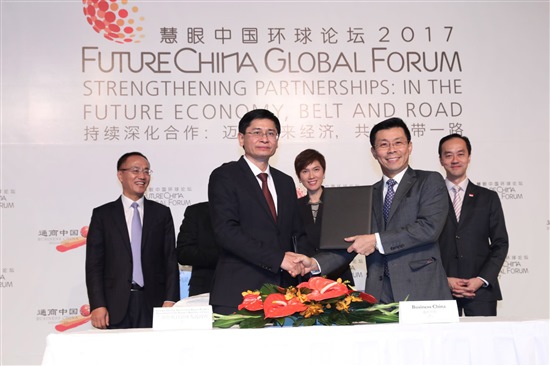
|
Thursday 13 July 2017
|
|
Registration与会者签到
|
|
Welcome and Opening Luncheon 开幕式暨午宴
Welcome address: LEE Yi Shyan李奕贤 Chairman, Business China, Singapore
Opening Speech by Guest-of-Honour: TEO Chee Hean张志贤 Deputy Prime Minister Co-chairman of the Singapore-China Joint Council for Bilateral Cooperation, Singapore
Keynote address: CHEN Deming 陈德铭, Standing Committee Member of the Chinese People’s Political Consultative Conference; President of China’s Association for Relations Across the Taiwan Straits, People’s Republic of China
Memorandum of Understanding Signing Ceremony
Keynote address: LAN Tianli蓝天立 Standing Member of the CPC Guangxi Regional Committee and First Vice Governor of Guangxi Zhuang Autonomous Region, People’s Republic China
ZHANG Jie张杰 Vice President, Chinese Academy of Sciences, People’s Republic of China |
|
1 Opening Plenary Session开幕主题演讲
A status report on China’s economy in the global context 放眼全球发展背景中的中国经济
The government seems now to have stabilized the economy on a course of achieving the official growth target of about 6.5% for the year. However, this comes at the price of maintaining or even amplifying the distortions and imbalances in the economic structure, as no major reform – especially in the SOEs domain – is happening and stimulus measures to sustain activity continue in many cases to reflect an allocation of resources which is not the most efficient. At the same time, the economy continues to remain very vulnerable to financial risks, which are today a key concern for the leadership, and to possible external shocks such as trade frictions with the US and/or Europe. · How to assess the present situation of the Chinese economy beyond the official figures of GDP growth? · Can this year’s growth target be achieved without increasing structural imbalances in the absence of new reforms? · How does China’s “new normal” translate into the trend growth rate that can be expected in the coming years? · Will the increase of trade frictions impact China’s economic prospects?
Panellists: CHEN Weidong陈卫东, General Director of the Institute of International Finance, Bank of China Group, People’s Republic of China HU Biliang 胡必亮, Director, the Belt and Road Research Institute (BRRI); Dean, Emerging Markets Institute, Professor of Economics, Beijing Normal University, People’s Republic of China Yukon HUANG 黄育川, Senior Fellow, Asia Program, Carnegie Endowment for International Peace, United States of America Chris LEUNG 梁兆基, Executive Director and Senior Economist, DBS Bank, Hong Kong SAR Tommy XIE 谢栋明, Head of Greater China Research, OCBC Bank, Singapore Moderator: Clyde PRESTOWITZ, President, Economic Strategy Institute, United States of America
|
|
Networking Break 茶歇交流
|
|
2 Plenary Session主题讨论
Partnering Chinese companies for projects along the Belt and Road与中资企业联手开发一带一路合作项目 Since the Belt & Road Initiative (BRI) was announced in 2013, China has been seeking cooperation across the BRI geographical spread of 65 countries and which spans numerous languages, cultures, economic and political systems. In the process, the initiative has pushed Chinese companies to expand outside of China and become globally competitive. China’s ambition to expand her global standing and influence through the BRI, is not expected to slow down. Individuals and businesses should not ignore this economic wave arriving in various regions along the B&R, including Southeast Asia, South Asia, as well as other emerging markets like Africa and Central Asia. · Arising opportunities in countries along the Belt and Road (including Southeast Asia and Central Asia) · Strategies for companies and/or individuals to be relevant so as to seize opportunities and benefit from the BRI · How companies and/or countries can value-add and complement Chinese enterprises to ride the BRI wave · How can countries and companies work on third countries’ projects with China along the Belt and Road? · Who can leverage on the available BRI funding that has been announced to date, and how?
Panellists: Sergey ANASHKIN, Executive Director, KTZ Express JSC, Republic of Kazakhstan Setyono Djuandi DARMONO 许龙川, President Commissioner, PT Jababeka TBK, Indonesia REN Dong Yan任冬艳, General Manager, China Construction Bank Singapore branch, Singapore Pisit SEREWIWATTANA 披实, President, Export-Import Bank of Thailand (EXIM Thailand), Thailand TEO Eng Cheong 张永昌, CEO International (Singapore, Southeast Asia, North Asia), Surbana Jurong Pte Ltd, Singapore
Moderator: Kathy LAI黎秀婷, Deputy CEO, International Enterprise Singapore, Singapore
|
|
3 Plenary Session主题讨论
What is required to make the Belt and Road Initiative an all-inclusive, win-win, grand design? 一带一路成为包容共赢宏大蓝图的必备条件
With its huge scope and ambitious objectives, the Belt and Road Initiative has the potential to be a game-changer on the global economic and geopolitical scene. It has raised great expectations in the 65 countries included in the initiative. However, there is no underestimating the complexity of the project and its challenges as the initiative encompasses countries with different levels of economic sophistication, different cultures and ways of doing business, and different socio-political contexts. Despite Beijing’s assurances that the initiative is a win-win project, there are also a number of concerns about how the initiative will play out in terms of benefiting not only Chinese companies – many of whom having to address huge over-capacity problems – but also the companies of the countries along the Road and Belt Initiative. · What are the prerequisites to be observed to make BRI a sustainable growth contributor for the countries involved? · Are there some initial lessons to be drawn from the projects which have already been undertaken? · Have the Chinese companies the cultural skills and the management resources to operate in the many diverse countries involved in the Belt and Road Initiative? · How to ensure fair competition between Chinese and non-Chinese companies in the bidding processes and –more generally – a level playing field between and what role could international companies play in the Initiative? · Given the geopolitical dimension of the Belt and Road Initiative how to ensure that geopolitical considerations will not trump sound economic and commercial ones?
Panellists: Yaseen ANWAR, Senior Advisor, Industrial & Commercial Bank of China, Singapore FENG Da Hsuan 冯达旋, Director of Global Affairs and Special Advisor to Rector, University of Macau, Macau SAR TEO Siong Seng 张松声, Business China Board Member; Chairman, Singapore Business Federation; Managing Director, Pacific International Lines Pte Ltd, Singapore WANG Congyuan 王从远, Director of Guotsing Holding Group Co., Ltd; Executive Director and CEO of CNQC International Holdings Limited, People’s Republic of China WANG Yin王音, Rotating Secretary General, China International Council for the Promotion of Multinational Corporations (CICPMC), People’s Republic of China Gita WIRJAWAN, Founder & Chairman, Ancora Group, Indonesia
Moderator: David WIJERATNE, Head of the Growth Markets Centre, PwC, Singapore
|
|
Networking Cocktail 鸡尾酒会
|
Day 2 – Tuesday, 28 August 2018
| 0900hrs – 1000hrs | 7 – PLENARY SESSION There is no underestimating the growing concerns among ASEAN countries about the U.S. staying power in the region—particularly after the U.S. withdrawal from the Trans-Pacific Partnership, and also in view of the almost exclusive focus that the Trump administration has devoted to Northeast Asia. The Indonesia visit of U.S. Vice-President Mike Pence last Spring was meant to send a reassuring signal about US intentions, along with President Trump’s participation in the APEC Summit last November. Are there steps or initiatives that ASEAN countries would welcome to validate the statement from Secretary of State Tillerson that the Asia-Pacific region is a top priority of the Trump administration and that ASEAN is an essential partner? PANELLISTS
|
| 1000hrs – 1030hrs | TEA AND NETWORKING BREAK |
| 1030hrs – 1300hrs | 8 – PROMOTING REGIONAL INTEGRATION: CHINA-SINGAPORE (CHONGQING) CONNECTIVITY INITIATIVE — SOUTHERN TRANSPORT CORRIDOR Introduction
|
| 1315hrs – 1500hrs | 9 – In conversation with Minister Chan Chun Sing “China-ASEAN Connectivity 2030”
|
| 1500hrs – 1600hrs | 10 – PLENARY SESSION
|
| 1600hrs – 1700hrs | 11A – PANEL DISCUSSION
— With a booming middle class and 130 million people using smartphones (20% of ASEAN population), ASEAN is shaping up as the next growth frontier for e-commerce. The acquisition of Lazada (the largest Southeast Asian e-commerce site) by Alibaba in the Philippines, illustrated that key e-commerce companies are now paying to the ASEAN region as their next growth region. However, a number of challenges still need to be addressed.
|
| 1830hrs – 2000hrs | COCKTAIL RECEPTION |
Copyright 2025 © Business China. All Rights Reserved. | Web Design By MediaPlus Digital